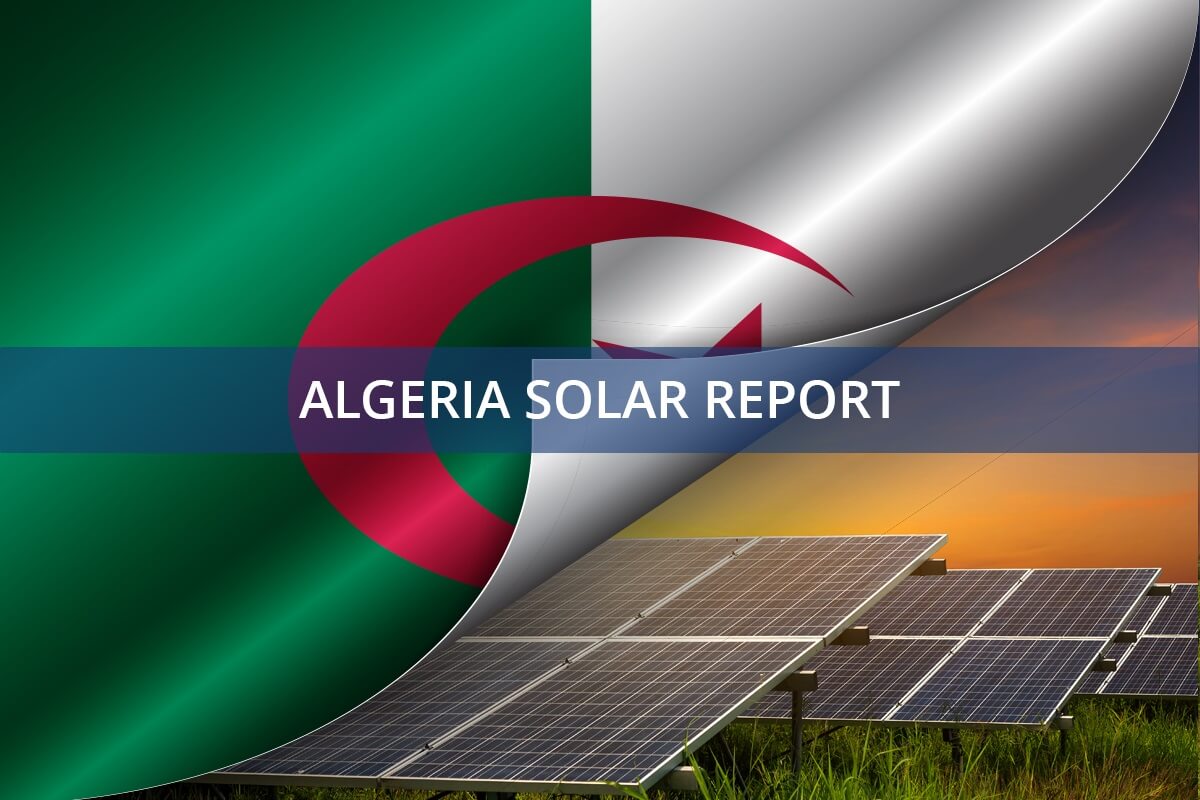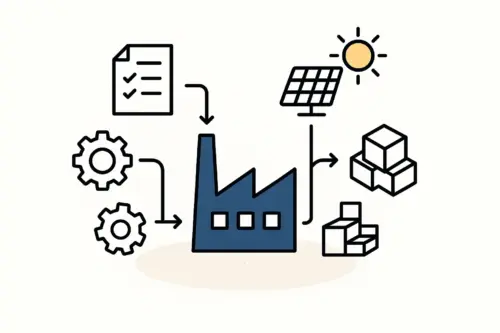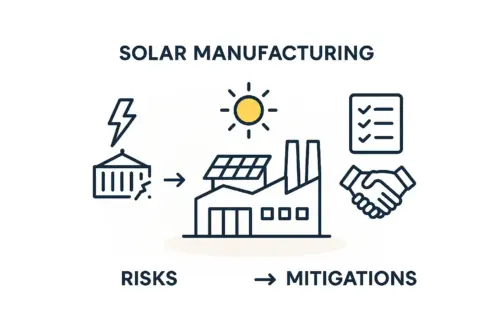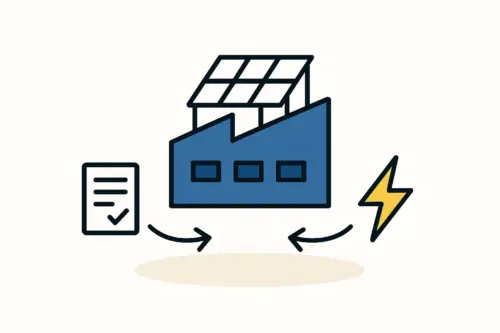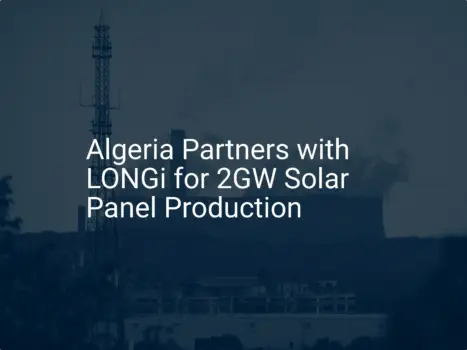You know, Algeria is one of those places truly blessed by the sun – it has some of the highest solar potential on the entire planet! And right now, the nation is on a really exciting journey, looking to reshape its energy future. They’ve got these ambitious goals to bring a significant chunk of renewable energy online. So, for sharp entrepreneurs and investors like yourself, the real question isn’t if solar is going to grow here, but how you can become a vital part of this incredible expansion, especially when it comes to local solar panel manufacturing in Algeria.
Now, setting up a solar panel factory? That’s no small undertaking. You absolutely need solid infrastructure – things like reliable power, efficient ways to move goods, and the right kind of industrial zones. These aren’t just nice-to-haves; they’re crucial for your success. So, let’s take a closer look at Algeria’s current infrastructure and see just how ready it is to support those solar panel manufacturing dreams you might be nurturing.
Table of Contents
Algeria’s Solar Vision: The Big Push for Local Manufacturing
Algeria’s commitment to solar energy? It’s both clear and genuinely impressive. The government isn’t just dipping its toes in; they’ve set their sights high, aiming to generate a whopping 15 GW of power from solar sources by 2035 (as per PVKnowhow). But here’s the interesting part: this vision goes way beyond just generating power. It’s a smart, strategic move to build a strong, home-grown solar manufacturing industry.
Why? Well, the goals are multifaceted: boosting energy security (always a good thing!), creating valuable jobs for Algerians, diversifying an economy that’s been heavily reliant on other sectors, and positioning Algeria as a key player in the regional renewable energy scene. Big initiatives like the “Solar 1,000 MW” project (which actually grew even larger) and the recent tenders for a huge 2 GW and then 3 GW of solar PV projects really drive home just how serious they are about this (thanks to IEF and PVKnowhow for those stats).
This national strategy is essentially rolling out the welcome mat for investment opportunities in local production. It’s all about cutting down reliance on imported solar panels and fostering a self-sufficient solar ecosystem right here, on Algerian soil. Pretty exciting, right?
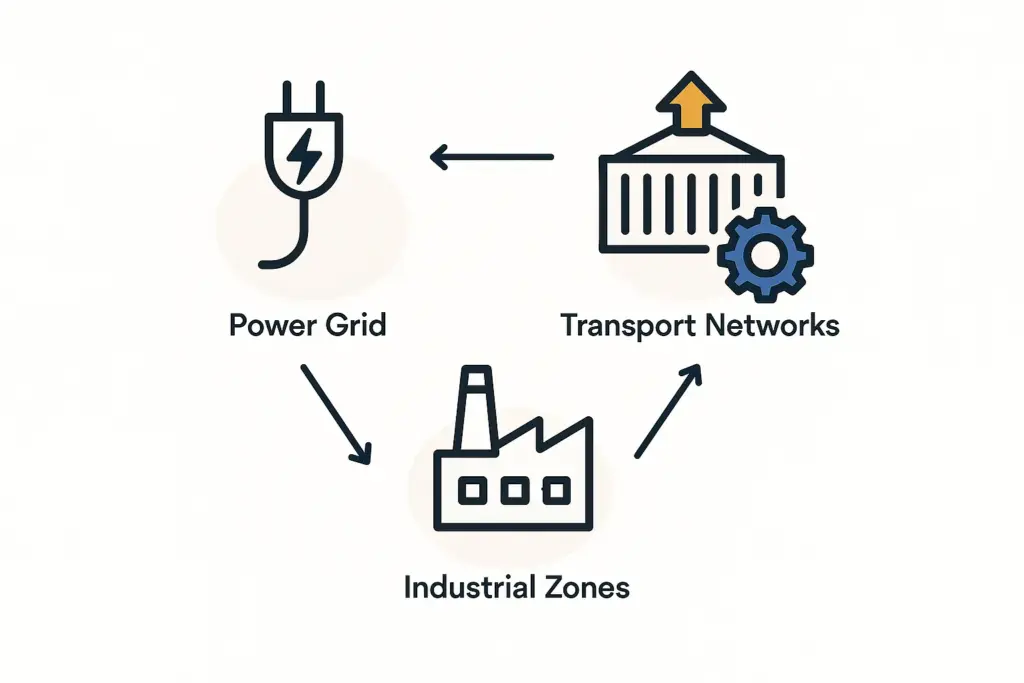
Powering Production: A Look at Algeria’s Grid Infrastructure
Okay, let’s talk power. For any factory, and especially one as energy-intensive as solar panel production, a stable and plentiful power supply is absolutely non-negotiable. You just can’t have the lights flickering on your production line. So, what’s the story with Algeria’s grid?
Current State of the Grid
Algeria’s national electricity and gas company, Sonelgaz, is the big player here. They oversee a grid with an installed capacity of around 24,000 MW, mostly powered by natural gas (good info from Africa Energy Portal). Generally, it’s pretty stable.
Now, bringing large amounts of intermittent renewable energy (like solar) online always presents a few technical hurdles for any grid, but the good news is these are being actively tackled. We’ve recently seen over 1,100 MW of renewable capacity successfully integrated, alongside important network upgrades like new transformers and high-tension lines (Ecofin Agency and RealClearEnergy have been tracking this).
Future-Proofing the Grid for Solar
The Algerian government and Sonelgaz aren’t just sitting back; they’re investing heavily to modernize and expand the grid. Get this: Sonelgaz’s 2025 investment plan has about $5 billion earmarked just for production, transport, and distribution infrastructure (Energy Capital Power reports).
This includes building approximately 10,000 km of new high-voltage transmission lines, with another 24,500 km in the pipeline. Think of these lines as the superhighways for electricity, vital for getting that abundant power from the sun-drenched desert regions to where it’s needed most. These upgrades are all about making the grid more stable, cutting down on those pesky transmission losses, and generally getting ready for a big influx of renewable energy. ESI-Africa also chimes in with reports on agreements to enhance or modernize the grid, which is another fantastic sign of progress for Algeria’s solar infrastructure.
Ready to make big Profits?
The solar Industry is Booming
WE HELP NEWCOMERS to the solar industry start their own solar module production line. Customers can make BIG PROFITS by selling modules and finding investors, without wasting money and time on things they don't need!
What This Means for Your Solar Panel Factory
So, what do all these grid developments actually mean for your potential factory? Let’s break it down:
- More Reliable Power: Thanks to these ongoing investments, you can look forward to a more dependable power source. That’s music to the ears of any manufacturer, as it’s essential for keeping your production lines humming smoothly.
- Grid Connection Opportunities: It’s definitely worth exploring options for on-site solar generation for your factory. Not only could this slash your operational costs, but you might even be able to feed surplus power back into the increasingly robust national grid. Win-win!
Logistics Backbone: Algeria’s Transport Networks
You know the drill: getting your raw materials (like silicon, glass, frames, and those all-important junction boxes) into your factory, and then getting your finished solar panels out – whether across Algeria or for export – all hinges on efficient transport. So, how does Algeria stack up here?
Road Infrastructure
Algeria has a pretty extensive road network, with over 96,000 km paved. A real standout is the East-West Highway, a massive artery stretching over 1,200 km. It connects major cities and industrial hubs, making overland transport significantly easier (Wikipedia and Britannica have good overviews).
While this main network is fairly well-developed, it’s worth noting that the quality of secondary roads can vary, and that’s something to keep in mind for those crucial final-mile logistics.
Rail Infrastructure
The rail network, currently around 5,200 km, is getting a serious makeover with ongoing modernization and expansion projects. The big focus here is on better connecting industrial zones, urban centers, and, importantly, ports. For those bulky raw materials and containerized finished goods, especially if you’re moving them over long distances, rail can be a really cost-effective and efficient option.
Port Facilities
Algeria boasts several major commercial ports – think Algiers, Oran, Annaba, and Bejaïa – all equipped to handle bulk and containerized cargo (LogCluster provides good details). These ports are your gateways for international trade. For any factory eyeing the export market, the ability of these ports to efficiently manage the import of specialized solar manufacturing components and the export of finished modules will be a really, really important piece of the puzzle.
Logistical Scorecard for Solar Manufacturing
So, if we were to give Algeria’s improving transport infrastructure a score for your needs, here’s how it looks:
- Smooth Sailing for Imports: The major ports and the primary road network are definitely set up to support the inflow of the manufacturing components you’ll need.
- Reaching Your Algerian Customers: That East-West Highway and the developing rail links make it much easier to distribute your panels throughout Algeria.
- Eyes on Export? Algeria’s proximity to European and African markets, combined with its port infrastructure, definitely opens up exciting export opportunities. Just a friendly tip: be sure to factor in customs and port logistics efficiency – that’s an area you’ll want to watch closely and do your due diligence on.
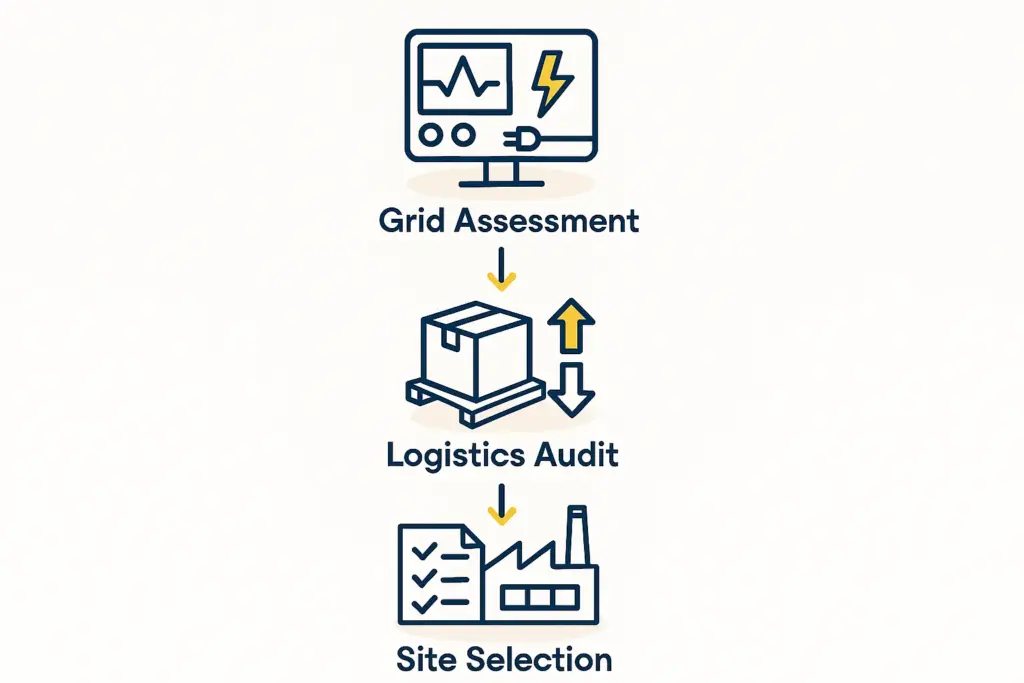
Finding a Home: Suitable Industrial Zones for Solar Factories
Choosing the right spot within Algeria for your factory? That’s a huge decision, and one you’ll want to get right. Designated industrial zones can be a fantastic starting point, as they often come with developed infrastructure and, sometimes, some very welcome specific incentives.
Overview of Algeria’s Industrial Landscape
Algeria has been actively developing industrial zones specifically to draw in investment like yours. These zones usually provide good access to utilities (power, water), transport links, and a ready-made framework for industrial operations.
And here’s some good news for us: increasingly, the focus is on zones that can support new energy technologies – and that’s a big plus for solar!
Deep Dive into Promising Zones
Let’s zoom in a bit on some regions and specific industrial sites that are already buzzing with potential or are even active in solar manufacturing:
- Ouargla: This region is already home to Zergoun Green Energy, which launched a pretty impressive 200 MW highly automated solar panel production plant (Africa Energy Portal and PVKnowhow have covered this). Its strategic location in a zone with incredibly high solar irradiation is a definite advantage.
- Boukerana (Mila): Over here, Milltech operates a 100 MW module factory (which they can scale up to 200 MW) that boasts European-standard automation (PV-Magazine has the details).
- Bordj Bou Arreridj: This area is already known as a hub for electronics manufacturing, and it hosts Condor’s 130 MW solar module assembly line (PVKnowhow and PV-Magazine are good sources here too).
- Sidi Bel Abbès: This is another area that has been pinpointed for renewable energy projects.
It’s also worth noting something quite encouraging: existing assembly capacity in Algeria was around 500 MW in late 2024, with expectations to reach 600-700 MW by the end of 2025 (according to PV-Magazine). This points to a growing ecosystem and an available, though still developing, skilled workforce for those planning to invest in Algeria solar manufacturing.
Infrastructure within Zones
As you start exploring these zones (or others), here are a few really important things to keep an eye on and ask questions about:
- All The Essentials: Make sure there’s consistent power supply, reliable water availability, and proper waste management facilities. Don’t take these for granted!
- Easy In, Easy Out: How close is the zone to major highways, rail lines, and ports? Smooth logistics are key.
- Space to Grow: What are the terms and costs for acquiring or leasing industrial land? Think about your future expansion plans too.
- Finding Your Team: Is there a good pool of skilled and semi-skilled labor available locally? Or will you need to factor in training?
The Investment Landscape: Incentives and Regulatory Framework
Now, let’s talk about the money side and the rules of the game. Algeria is genuinely working hard to create a more appealing investment climate, especially for key sectors like renewable energy. It’s clear they want businesses like yours to succeed.
Algeria’s New Investment Law
A reformed investment code is now in place, and it’s specifically designed to offer guarantees, simplify procedures, and attract foreign direct investment (Trade.gov is a good resource for the nitty-gritty). One really interesting change for foreign investors – and this is a big one – is the removal of the old 51/49 ownership rule for renewable energy projects and other non-strategic sectors. This allows for much greater foreign ownership, which can be a game-changer for those looking at Algeria investment incentives solar.
The Algerian Investment Promotion Agency (AAPI) is the main body there to support investors like you, so they should be one of your first calls.
Specific Incentives for Solar Panel Manufacturing
Beyond the general improvements, there are some specific incentives for renewable energy production that you’ll definitely want to know about. These could really sweeten the deal:
- Tax Breaks: You might be eligible for some very helpful exemptions from corporate income tax, VAT, and customs duties on imported equipment and raw materials that are essential for your manufacturing operations. Every bit helps!
- Go Local, Get Bonuses: Algeria is keen to see local value addition – and they’re putting their money where their mouth is. There’s talk of a financial bonus of up to 25% for solar projects that source over 35% of their materials domestically. This is a direct boost for local panel producers like you could be!
- Guaranteed Buyers: Attractive feed-in tariffs for solar PV projects (for instance, 12.75-15.94 DZD/kWh for projects over 1 MW with 20-year Power Purchase Agreements) help create strong domestic demand for locally manufactured panels (Jones Day has good analysis on this).
- Partnering Up: The Algerian government has shown it’s open to partnerships. They’ve even had discussions with major international players like LONGi for potential large-scale manufacturing and technology transfer (EnergyNews.pro reported on this), which signals a welcoming attitude.
Figuring out all these incentives and making the absolute most of them will, of course, take some careful planning and good, clear communication with the relevant authorities like AAPI. But they’re there for the taking!
Challenges and Strategic Considerations for Investors
Now, while the picture looks overwhelmingly promising, let’s be real – every opportunity comes with its own set of challenges. It’s always best to go in with your eyes wide open. Here are a few things to keep in your back pocket as you consider Algeria:
- Cutting Through Red Tape: Yes, administrative processes, like in many places, can sometimes take a while. It’s just part of the landscape. But it’s genuinely good to know that reforms are underway to streamline these, so things are moving in the right direction. Patience and good local guidance will be your friends here.
- Building Your Dream Team: While a workforce certainly exists, finding those highly specialized technical skills needed for advanced solar manufacturing might mean you’ll need to set up some targeted training programs. Teaming up with local technical institutes could be a really smart move here – a win-win for you and the local community.
- Getting Your Supplies Lined Up: Building a robust local supply chain for certain specialized components (like specific types of glass, or solar cells if you’re not planning to be fully vertically integrated) will take time. It’s realistic to expect that you’ll likely need to rely on imports for some items, at least in the initial stages.
- Riding the Market Waves: To ensure sustained growth for your factory, you’ll want to get a really good feel for domestic demand cycles. And beyond that, definitely explore export markets to diversify and expand your reach.
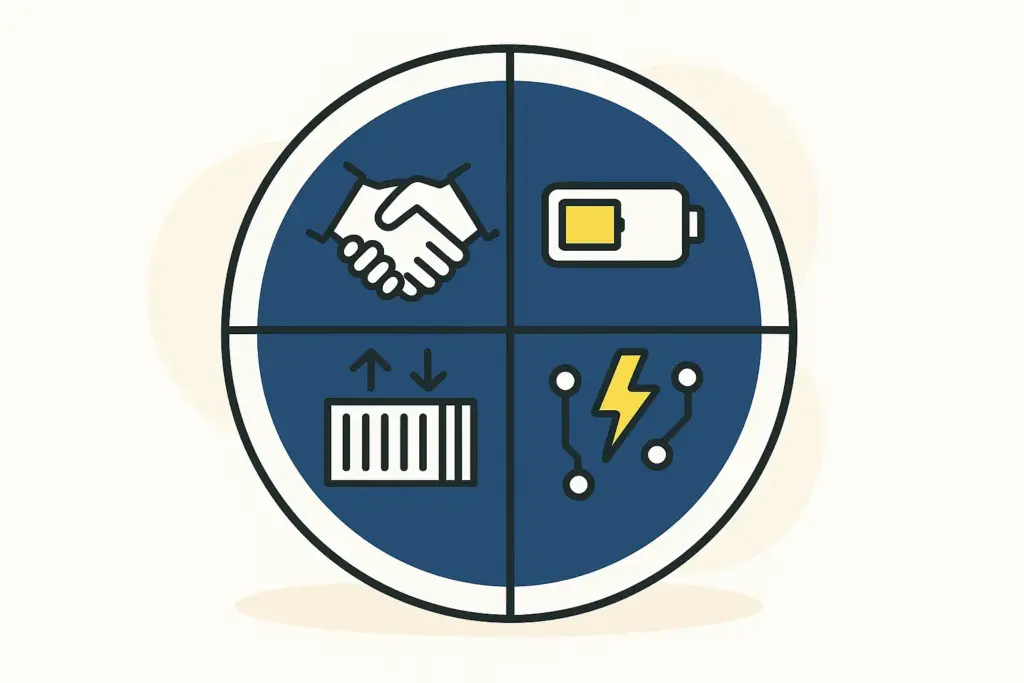
Conclusion: Is Algeria Ready for Your Solar Panel Factory?
So, after looking at all of this, the big question remains: Is Algeria truly ready for your solar panel factory? From where I stand, the signs are definitely pointing in a very positive direction, and things are improving all the time. It’s an evolving landscape, but one with tremendous upside for solar panel manufacturing in Algeria.
Let’s recap what the nation offers:
- Solid Government Backing: You’ve got clear renewable energy targets and a government that’s genuinely serious about fostering its local industry. That’s huge.
- Sunshine Galore: Let’s not forget the incredible solar resource – truly among the best in the world! It’s the fundamental ingredient, and Algeria has it in spades.
- Infrastructure on the Up: Significant investments are being poured into the power grid and transport networks, which are the backbone of any manufacturing venture.
- Ready-Made Hubs: Several industrial zones are already hosting or are well-suited for solar manufacturing operations, giving you a potential head start.
- Sweetening the Deal: A reformed investment law and specific benefits for renewable energy producers make it an even more interesting and attractive proposition.
That said, and this is important, your success will really come down to doing your homework thoroughly. You’ll want to carefully assess specific site logistics, navigate the evolving (but improving!) regulatory landscape with diligence, and have a solid, forward-thinking plan for workforce development.
With its strategic location, a growing domestic market thirsty for clean energy, and strong government backing, Algeria is undeniably on the path to becoming a significant player in the solar energy world. For entrepreneurs and companies who are prepared to understand and work with its specific conditions, the opportunity to establish a solar panel factory in Algeria is looking increasingly viable and, frankly, potentially very rewarding.
What are your thoughts on this? Have you looked into Algeria, or are you considering it? We’d genuinely love to hear your perspectives or any questions you might have in the comments below! Let’s get a conversation going.
Want to learn more or need expert help? Visit our free e-course or explore our services. Or, if you’re ready to dive deeper, our Premium Business Plan E-Course offers personalized guidance to get your venture off the ground. Let’s make your solar journey smooth and successful.
Frequently Asked Questions (FAQs)
Got a few more questions bubbling up? No problem! We’ve put together some common ones to help you out:
Q1: What’s the big picture for Algeria’s solar goals?
A: Basically, Algeria is aiming really high – they want to install an impressive 15 GW of solar energy capacity by 2035. This is all part of their broader renewable energy program, and this ambitious target is a key reason why they’re so keen on developing local solar panel manufacturing.
Q2: Can Algeria’s power grid actually handle a big factory?
A: Good question! Algeria’s power grid, which is managed by Sonelgaz, has a substantial installed capacity. Plus, and this is key, they’re making significant investments (we’re talking around $5 billion planned by 2025) to modernize and expand it. This is all about enhancing its stability and its capacity to integrate renewable energy and support big industrial consumers. However, it’s always a smart move to carry out your own site-specific power assessments – due diligence is your best friend!
Q3: What makes Algeria good for logistics when setting up a solar factory?
A: There are some real pluses here! Think about an extensive paved road network, featuring that major East-West Highway. Then there’s a rail system that’s being modernized, and several well-equipped commercial ports (like Algiers, Oran, Annaba, and Bejaïa) that make importing raw materials and exporting finished goods much smoother. And don’t forget, its proximity to European and African markets is a definite logistical advantage for exports.
Q4: Any particular industrial zones in Algeria that are good for solar manufacturing?
A: Definitely! Certain zones are already making a name for themselves. Places like Ouargla (which is home to Zergoun Green Energy), Boukerana in Mila (where Milltech operates), and Bordj Bou Arreridj (home to Condor’s facility) have emerged as locations with existing solar module assembly or manufacturing activities. These zones offer varying degrees of infrastructure and connectivity that are well-suited for such operations.
Q5: What perks can solar panel producers get for investing in Algeria?
A: Algeria’s reformed investment law has rolled out several pretty attractive incentives. We’re talking potential tax exemptions (on corporate income, VAT, and customs duties for necessary imports), land benefits, and – this is a big one – the removal of that old 51/49 foreign ownership restriction for renewable energy projects. Plus, specific local content bonuses (for example, up to a 25% financial bonus for solar PV projects that use over 35% local materials) are designed to directly encourage domestic manufacturing. It’s worth looking into these carefully!
Q6: How is Algeria making sure its grid can handle all that new solar power?
A: They’re tackling this challenge head-on by investing heavily in expanding its high-voltage transmission network. They’re in the process of building around 10,000 km of new lines, with even more planned for the future. This is absolutely crucial for transporting solar power from those sun-rich areas to where the demand is, and for ensuring the overall stability of the grid as more renewables come online.
References
All references
We’ve gathered this info from a range of knowledgeable sources including PVKnowhow, PV-Magazine, ScienceDirect, International Energy Forum (IEF), Trade.gov, Africa Energy Portal, ESI-Africa, Energy Capital Power, RealClearEnergy, Ecofin Agency, Wikipedia, Britannica, LogCluster.org, EnergyNews.pro, Jones Day, and other industry reports.

